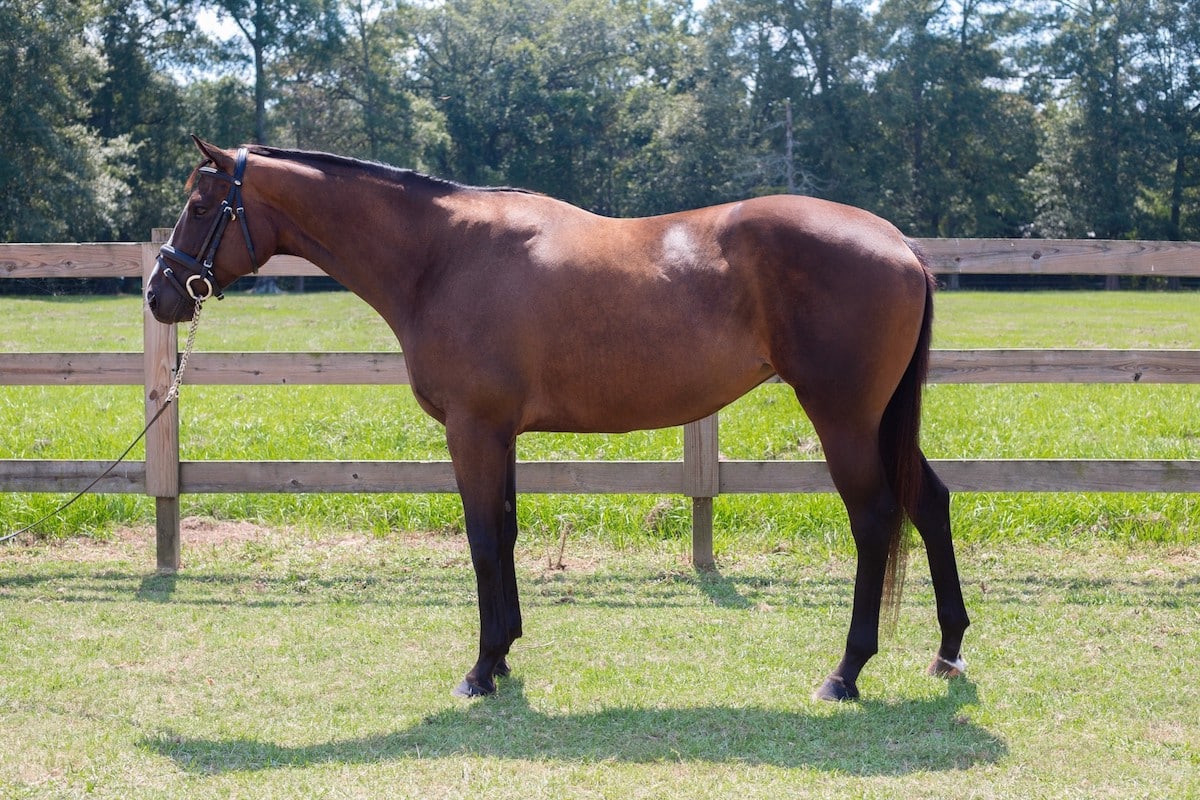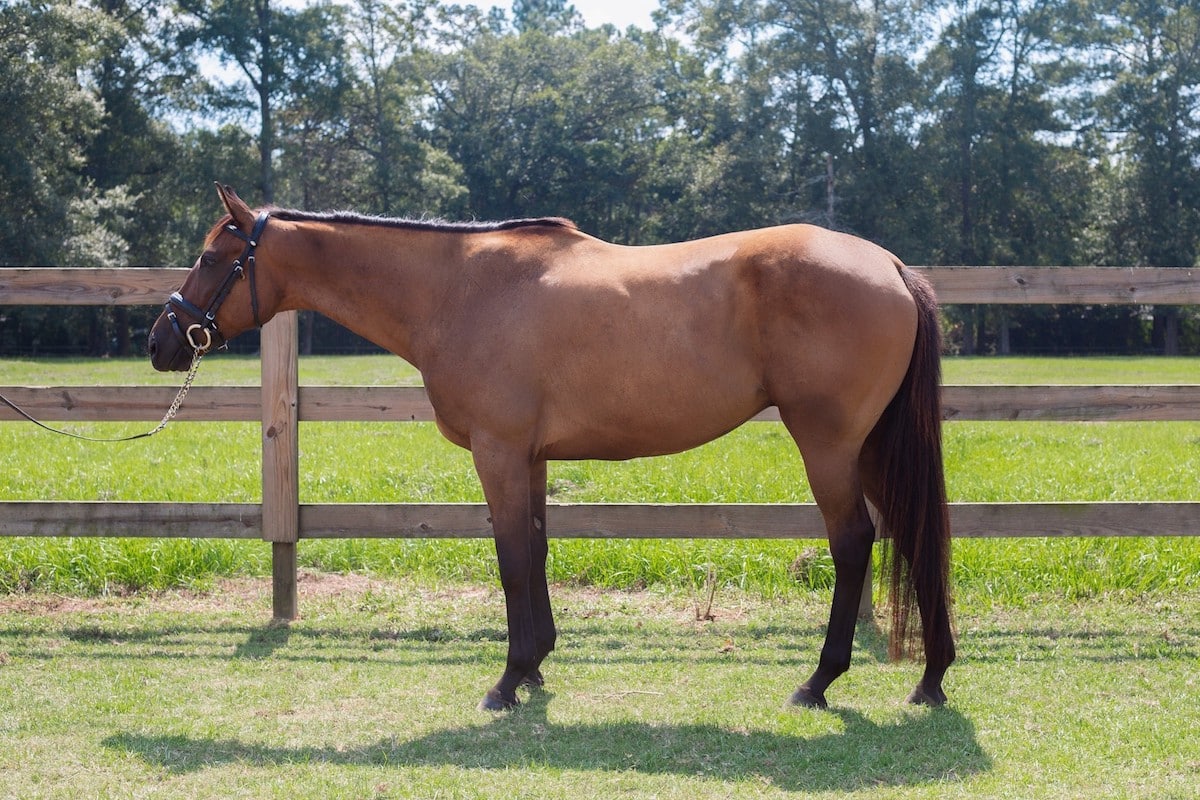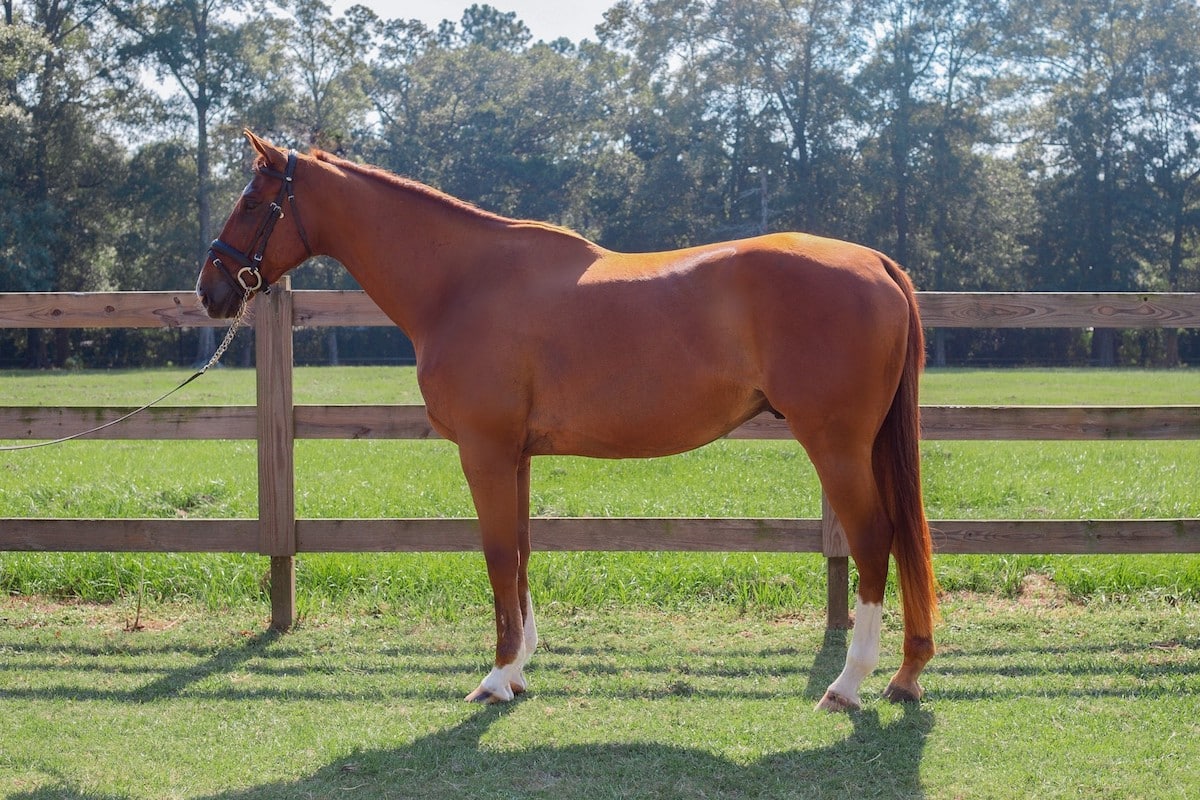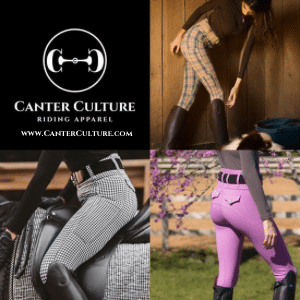Makeover trainers evaluate sport horse potential based on conformation shots
Social media has enabled potential OTTB owners to review a large number of retiring Thoroughbred racehorse listings at any given time. Newcomers to the breed might find it challenging to consider a prospect right off the track and decide if it’s a match for their desired purpose.
In this column veteran Thoroughbred Makeover trainers — professionals, juniors and amateurs alike — share their thoughts about assessing and selecting prospects and evaluate example horses based only on their conformation photos. We feature trainers from two disciplines in each issue.
Our Trainers
In this issue we added a fun twist: Our featured trainers are a mother and son combination who compete in two very different disciplines but both enjoyed success at the 2019 Thoroughbred Makeover.
■ Susan Deal
Professional, winner of Show Hunter and sixth in Show Jumper at the 2019 Thoroughbred Makeover with Furaha
Susan grew up riding Thoroughbreds with Rosemary Thomas at Summerduck Run Farm, in Culpeper, Virginia, where she got a foundation not only in riding but also in breeding, foaling and starting horses. She trains both show horses and field hunters out of her Grovespring Farm, in Culpeper, and teaches lessons and hosts summer camps.
■ Jim Deal
Professional, fourth in Polo at the 2019 Thoroughbred Makeover with Write Your Story
Jim has been riding under Susan’s instruction since before he can remember, participating in 4-H, showing ponies and field hunting. He took up polo at 11 and was instantly hooked, mentoring under various professionals and riding lots of Thoroughbreds. He is currently playing at the collegiate level.
Choosing a Horse
Both Susan Deal and her son, Jim, who are professional trainers, prefer to meet their prospects in person, and they have plenty of avenues in their equestrian communities through which to shop.
“If that’s not possible, then having someone I know look at the horse is next best,” says Susan. “Jim recently went to see a pony for me. He was spot-on in his description — thankfully — as I bought the pony!”
Jim was perhaps returning the favor for Susan, who picked out his 2019 Thoroughbred Makeover prospect.
“My mother found me that mare through a rehoming agency,” he says. “I find it difficult to buy a horse without seeing it in person or having someone I know personally vouch for it. Pictures definitely draw you in, and descriptions can be pretty accurate, but I’d like to get a personal feel for the horse.”
When shopping for show and field hunter prospects, Susan looks for young (4 or 5 years old), sensible, attractive horses that are good, athletic movers. She likes to watch them move from the side, front and back. “I look for a horse that has a long, ground-covering stride, engages well from behind and doesn’t interfere (hit himself).”
If possible, she likes to set up a low jump in a round pen or a jump chute to watch the horse’s form over the fence. “As far as conformation, I love a beautiful eye, neck and shoulder and an overall balanced appearance,” she says.
Like his mother, Jim prefers younger prospects and, like many polo players, shops almost exclusively for mares.
“I like a horse no taller than 15.2 hands at full growth, and I look for well-proportioned conformation.” In terms of temperament, he seeks a quiet horse that still has some character and personality.
Meet the Prospects
Our model horses come from Thoroughbred Retirement Network of Louisiana (TRNL), based in Covington. Founded in 2009 by Cynthia Morgan-D’Atrio, TRNL came about almost by accident; Morgan-D’Atrio had just opened her barn and, without really intending to, began acquiring solely Thoroughbreds, with more and more calls to take others in need. With four racetracks in Louisiana and very little state-level organized aftercare, she saw the need for a nonprofit to help rehabilitate (in some cases), retrain and adopt out these horses.
While Morgan-D’Atrio used to be able to accept horses needing extensive rehabilitation, she’s found that she can help more horses find homes by being more selective in which horses she takes. Thoroughbred Retirement Network of Louisiana’s horses receive a strong foundation in dressage, and some even go to horse shows. All adopters go through a riding evaluation to be best paired with an available horse. While these three horses might no longer be available for adoption by the time this magazine hits your mailbox, TRNL has plenty of prospects looking for their next partners.

Another Mimosa (Tapizar – Acacia, by Cherokee Run) Courtesy Madison Monroe/TRNL

Moo Lah (More Than Ready – JRay, by Distant View) Courtesy Madison Monroe/TRNL

Soy El Jeffe (Heatseeker [IRE] – Clean Break, by Swiss Yodeler) Courtesy Madison Monroe/TRNL
Susan’s Picks
Horse 1 This horse looks like the most attractive hunter. She looks through the bridle with a pleasant expression. She has an attractive head and neck and a cleaner throatlatch than Horse 3. Her topline is level and attractive. She looks like she will have a long, athletic stride — though I would love to see her in motion!
Horse 3 At first glance of these three horses, I thought I would love to ride the third one. He fits in a box nicely; his neck comes out of his shoulder more upright. He looks like he would be a fun one to take riding to hounds and do the jumpers.
Horse 2 This horse has a happy, kind expression, and who doesn’t love a willing horse? I prefer a longer, more developed neck in my horses I point for hunters, which ranks this horse a bit below the other two.
Jim’s Picks
Horse 3 This horse is very upright and has a short back, giving it a compact look, which I like for polo. This build makes it look like it would rely well on its haunches and gives it the agility necessary on the field. This looks like the most suitable horse of the three for polo.
Horse 1 This horse is hands-down the prettiest of the group. The gorgeous curve of its neck is something commonly seen in high-goal polo ponies. I’d imagine it would be a steady and easy mover; it’s just a bit tall for polo, judging by the fence behind it.
Horse 2 This horse has a very quiet eye and easygoing look. It naturally holds its head lower, giving the impression it would have a mild temperament. This horse isn’t quite as compact as the other two and may have some difficulty making the maneuvers required in polo at the upper levels, ranking it below the other two.
This article was originally published in the Fall 2020 issue of Off-Track Thoroughbred Magazine, the only publication dedicated to the Thoroughbred ex-racehorse in second careers. Want four information-packed issues a year delivered to your door or your favorite digital device? Subscribe now!

